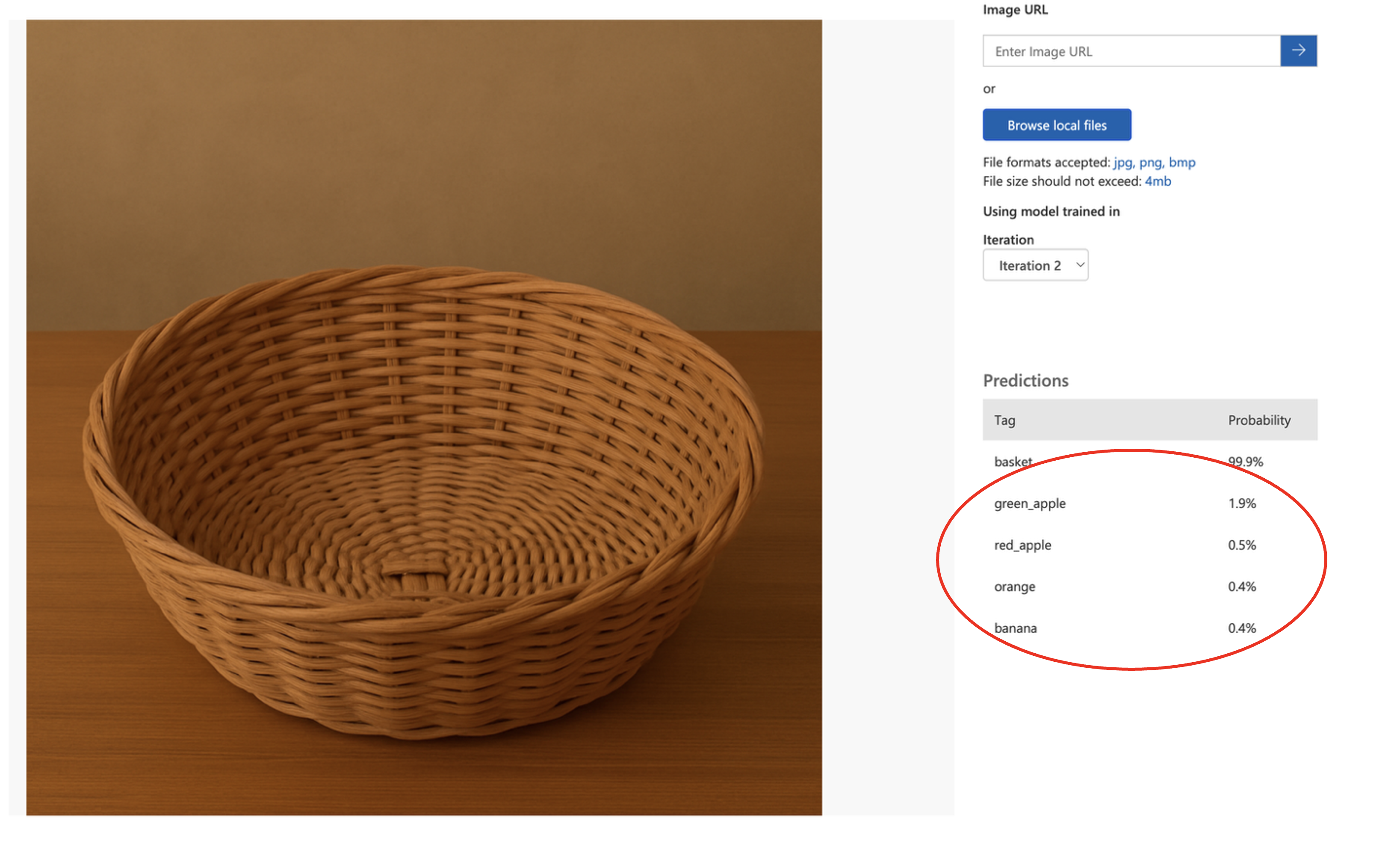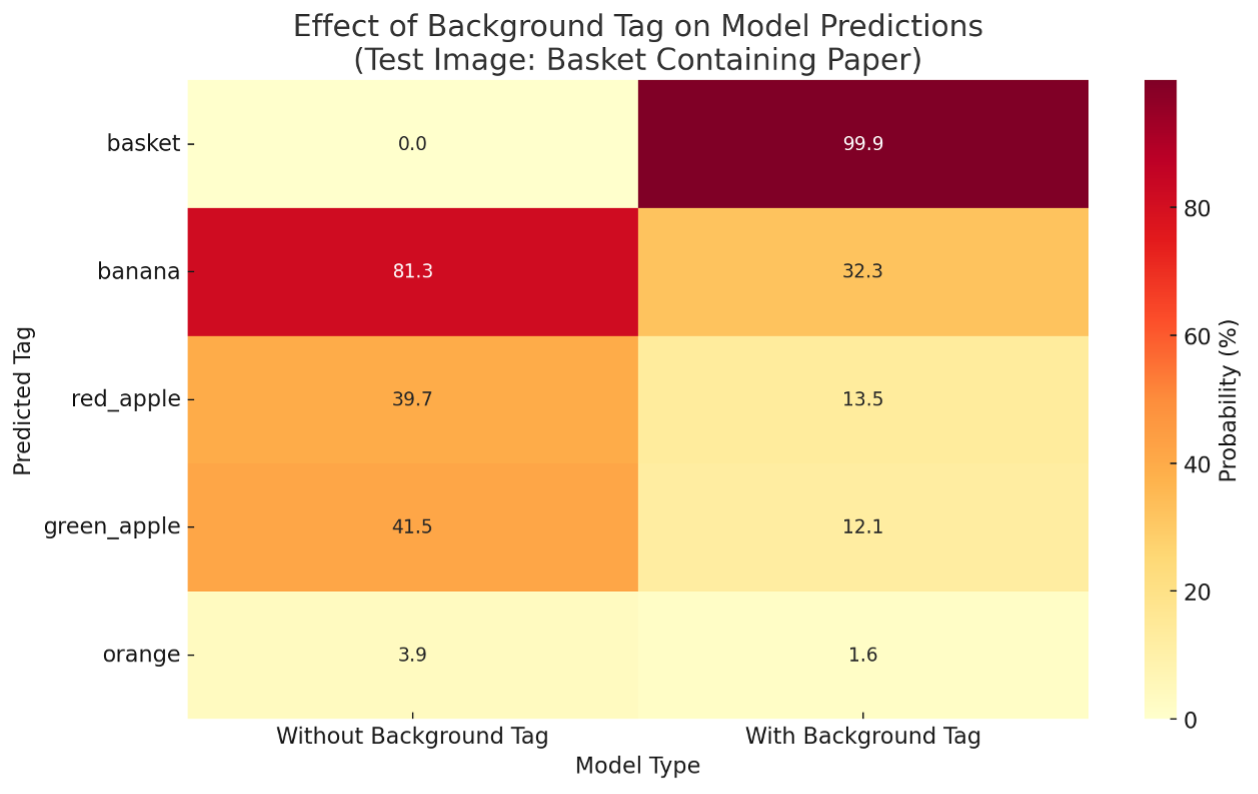The Importance of Background Tags
As aforementioned, tagging the background can greatly impact the training of your Custom Vision classifier. Since we tagged it in every image, the model was reliably able to identify an empty basket as containing no fruit. In order to demonstrate the improvement that is added by training the model on a background-only image (such as the empty basket), we put the model through two iterations of training: one iteration trained without the basket tag, and one with it.

For the iteration not trained on the basket tag, we get the following when predicting a fruit basket full of coloured paper:

With 99.9% confidence, the model has predicted a basket in the image, and assigned between 0-2% confidence to the presence of fruits; in keeping with what's actually in the image.
Conversely, using a model trained using a basket tag, testing the same image produced a very different result:

Here is a figure displaying model performance side-by-side - before and after including a background ("basket") tag in the training set:

Left (Without Background Tag): Misclassifications occur where the model incorrectly predicts fruit in background-only images. Right (With Background Tag): The model correctly identifies the empty basket and no longer confuses background elements with fruit types.